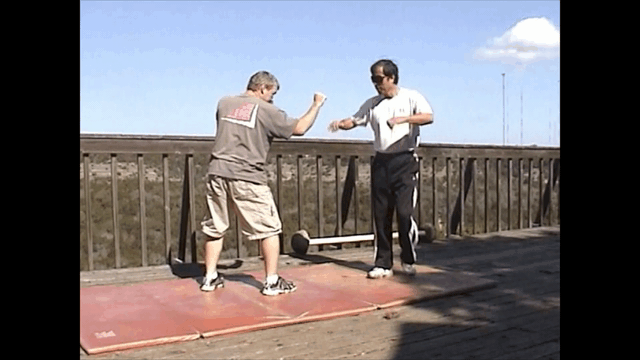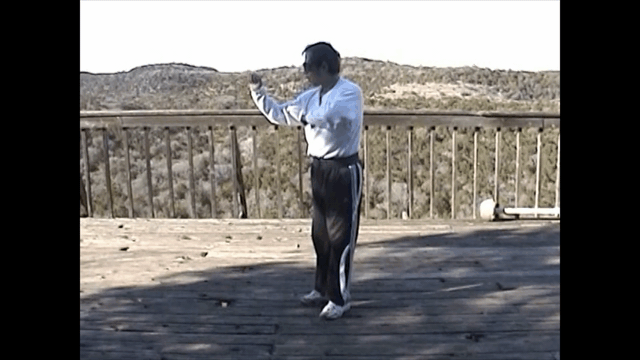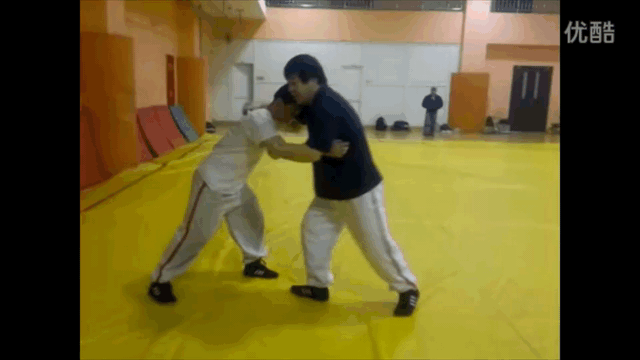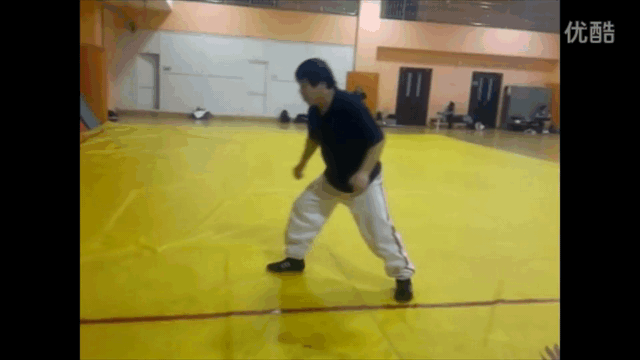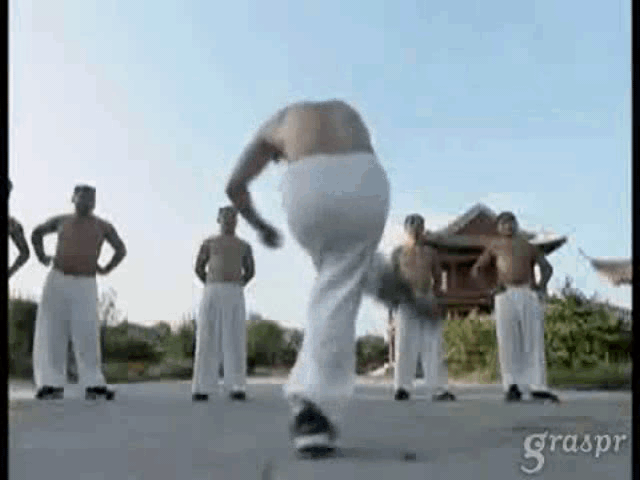skribs
Grandmaster
Note: This is not to say that you can learn effective striking from a video. Merely to say that the difference in training striking from a video is less than that of training grappling.
There is a video I've posted before on here, and a bunch on other sites. In this video, he claims that he and a friend (both with lots of experience in wrestling) spent a year trying to learn BJJ from videos, and when he finally went to class he felt the entire year was pretty much wasted. This video has been my go-to response whenever anyone asks about training at home instead of training in a martial arts school.
However, quarantines hit, and my school has been forced to close to students. As I've mentioned in other threads, we've been doing online classes via Zoom. It's been a struggle to teach over Zoom. Some of the younger kids tend to wander off, and a few others spend too much time right next to the screen instead of training. There are parts of the forms where it's hard to see what we're doing when we lead, and simply the extra challenge of using different footwork to remain on camera. Beginners sometimes benefit from a literal hands-on approach to teaching, where you help them manipulate their leg or arm so they can see exactly how they're supposed to move.
However, we have been able to teach the kicks, punches, and forms pretty well. Our grappling teaching? Completely failed. We did a test online, and students were able to display proper forms and striking techniques, but they were completely lost in the hand grab portion of the test.
This got me thinking about the video I linked above. This also got me started thinking about videos I've watched and how I've improved from them:
Now, in defense of grappling, the guy who tried to learn BJJ in his basement wasn't learning from training videos. He and his friends were trying to dissect what happens in fights and figure out what's going on, but with no real understanding of how it all worked. So it might be a bit better.
And in offense against striking, there are definitely some things you won't get by training on a video - and are even hard to get training online like in our Zoom class. Sparring experience, pad drills, sparring drills, and expert advice are all absent in home training. Even if you have a training partner, you're missing that expert advice. Even on Zoom, we can't hold pads for our students or spar with them.
However, the strike only connects with the opponent at the moment of impact. It's a lot easier to shadow box than it is to shadow roll. It's a lot easier to work on your punches and kicks on a heavy bag, than it is to work on your ground game against a dummy. Effective grappling requires you to read your opponent's energy, so you know where the path of least resistance is. That's something you can only learn against the opponent.
You can still get 50% of the striking practice in, but you'll probably only get 20% of effective grappling training.
That's my opinion, anyway. I think if you have to train from home, striking is much easier than grappling. I think if you can train in a gym, it's going to be much better for both.
There is a video I've posted before on here, and a bunch on other sites. In this video, he claims that he and a friend (both with lots of experience in wrestling) spent a year trying to learn BJJ from videos, and when he finally went to class he felt the entire year was pretty much wasted. This video has been my go-to response whenever anyone asks about training at home instead of training in a martial arts school.
However, quarantines hit, and my school has been forced to close to students. As I've mentioned in other threads, we've been doing online classes via Zoom. It's been a struggle to teach over Zoom. Some of the younger kids tend to wander off, and a few others spend too much time right next to the screen instead of training. There are parts of the forms where it's hard to see what we're doing when we lead, and simply the extra challenge of using different footwork to remain on camera. Beginners sometimes benefit from a literal hands-on approach to teaching, where you help them manipulate their leg or arm so they can see exactly how they're supposed to move.
However, we have been able to teach the kicks, punches, and forms pretty well. Our grappling teaching? Completely failed. We did a test online, and students were able to display proper forms and striking techniques, but they were completely lost in the hand grab portion of the test.
This got me thinking about the video I linked above. This also got me started thinking about videos I've watched and how I've improved from them:
- When I first started TKD, I watched Ginger Ninja Trickster's videos on Youtube to help improve my kicks. I credit him with my learning the 540 hook kick, something not taught at our school.
- Someone showed me the channel Fran Sands. I've been watching his videos and have a better understanding of different punching techniques. I've been watching his tutorials on footwork and punching, and adapting what he teaches in them to the context of Taekwondo.
- I've watched a few Muay Thai videos about the clinch, and one of them really helped me improve my knee strikes.
Now, in defense of grappling, the guy who tried to learn BJJ in his basement wasn't learning from training videos. He and his friends were trying to dissect what happens in fights and figure out what's going on, but with no real understanding of how it all worked. So it might be a bit better.
And in offense against striking, there are definitely some things you won't get by training on a video - and are even hard to get training online like in our Zoom class. Sparring experience, pad drills, sparring drills, and expert advice are all absent in home training. Even if you have a training partner, you're missing that expert advice. Even on Zoom, we can't hold pads for our students or spar with them.
However, the strike only connects with the opponent at the moment of impact. It's a lot easier to shadow box than it is to shadow roll. It's a lot easier to work on your punches and kicks on a heavy bag, than it is to work on your ground game against a dummy. Effective grappling requires you to read your opponent's energy, so you know where the path of least resistance is. That's something you can only learn against the opponent.
You can still get 50% of the striking practice in, but you'll probably only get 20% of effective grappling training.
That's my opinion, anyway. I think if you have to train from home, striking is much easier than grappling. I think if you can train in a gym, it's going to be much better for both.

